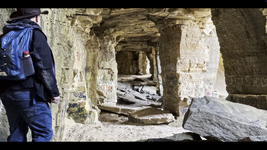- Joined
- May 31, 2019
- Messages
- 12
- Reaction score
- 8
- Points
- 3
Out on the high Pennine moors, I followed what at first looked like nothing more than a faint line through the heather. But as I walked, it became clear this wasn’t just a path — it was the ghost of one of Britain’s earliest railways.
This is part of the old Stanhope & Tyne line, built in the 1830s to carry coal and limestone across brutal terrain long before the age of modern engineering. It was a railway carved by hand, built by navvies in the middle of nowhere, and it helped spark the industrial rise of the North East.
The video explores what’s left of the route today — the long embankments, stone bridge ruins, and scars still visible in the landscape. From windswept moors to the remains of old inclines, it’s a glimpse into how industry once pushed deep into these remote hills.
It’s incredible how much of it is still out there if you know what to look for.
Video link below images.





This is part of the old Stanhope & Tyne line, built in the 1830s to carry coal and limestone across brutal terrain long before the age of modern engineering. It was a railway carved by hand, built by navvies in the middle of nowhere, and it helped spark the industrial rise of the North East.
The video explores what’s left of the route today — the long embankments, stone bridge ruins, and scars still visible in the landscape. From windswept moors to the remains of old inclines, it’s a glimpse into how industry once pushed deep into these remote hills.
It’s incredible how much of it is still out there if you know what to look for.
Video link below images.





